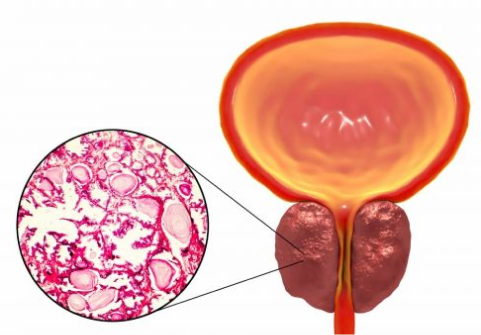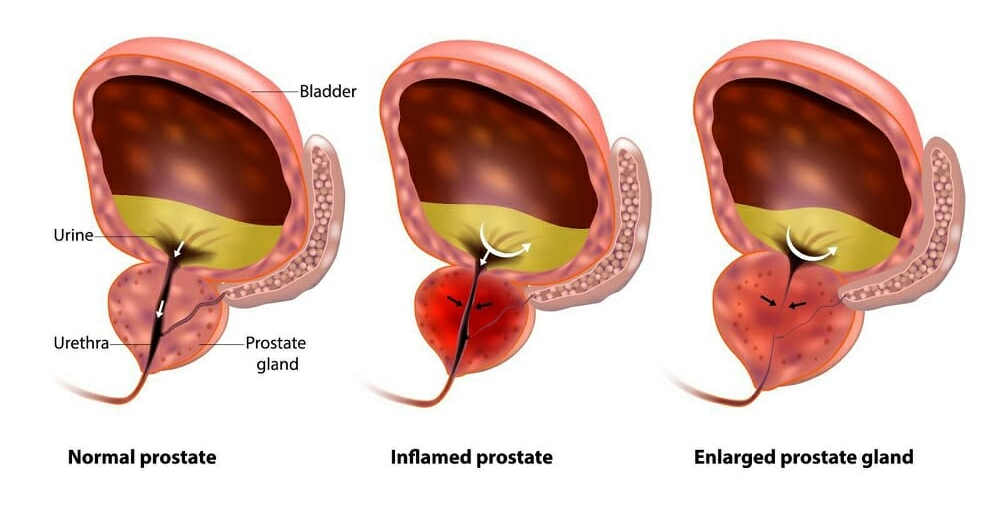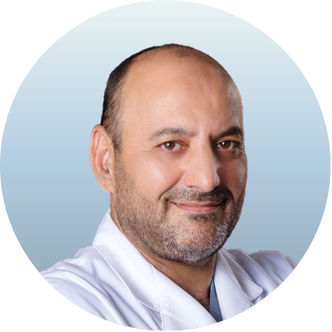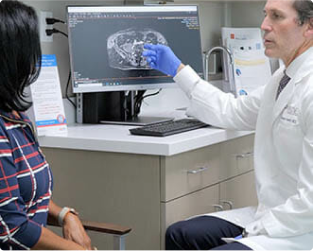

Is a relatively new and safer outpatient procedure performed by interventional radiologists to help treat benign prostatic hyperplasia (BPH), commonly known as enlarged prostate. While an enlarged prostate might not be life-threatening, it may affect your daily activities. PAE has a high success rate than various treatments available for BPH, with over ninety percent of the men experiencing significant relief in the first year. Additionally, PAE does not cause unwanted sexual side effects common with other treatments for Benign Prostatic Hyperplasia (BPH). Before looking at the other numerous benefits of the PAE procedure, let’s start by understanding exactly what BPH is and how it can affect a man’s daily life.
Your surgeon will make a small incision in the groin and insert a catheter through the artery that supplies blood to the prostate. After inserting the catheter, the surgeon injects a solution that contains thousands of microscopic plastic beads. Should change to “The tiny beads block the artery that supplies blood to the prostate. The process is referred to as embolization. Your surgeon will repeat the procedure on the other side but from the original incision. Depending on the location and the size of the prostatic arteries, the PAE procedure takes anywhere from 1 to 4 hours.
By blocking the blood flow of blood to the area affected by BPH, the cells in the prostate start to die. Over a few months, the immune system reabsorbs the dead tissues and forms a scar. The scar tissue gradually contracts, shrinking the prostate. The prostate usually shrinks by about 20 to 40 percent in about six months, resulting in significant symptom improvement and increased urine flow. Since it is impossible to block the blood flow to the prostate, partial blockage of blood flow also leads to a necrosis process that makes the prostate softer, alleviating the pressure that causes urine blockage.

Unlike surgeries, PAE does not involve the use of general anesthesia. However, the patient will get IV medication that takes the anxiety and pain, making you more comfortable during the procedure. The procedure is not painful and takes less time when compared to other surgeries.
Since the procedure does not involve removal of the prostate part physically, you may not see the results immediately. However, the patient will start noticing significant results in 1-2 months and continue getting consistently better results until 5-6 months later.
When compared to other treatments, PAE is a better alternative. The procedure is ideal for most individuals, including people taking certain medications such as blood thinners. The procedure is also effective in eliminating the symptoms without affecting the patient sex life. Some of the other reasons why you should choose PAE to include:

This is an outpatient procedure performed in an interventional radiology suite with the only use of IV medications to make them comfortable. Most patients are discharged 3-4 hours after the procedure.
The procedure only requires a small incision, meaning the patient will experience minimal discomfort during the procedure.
Patients have reported few side effects. Even better, they get consistent results, allowing them to get back on their feet within a short time.
One of the main advantages of PAE over surgery is the short recovery. Unlike surgeries that require a stay at the hospital, PAE is an outpatient procedure, meaning that the patient can go home the same day. The recovery period is also significantly short since no physical part is removed. This means that you do not have to deal with the pain associated with healing an internal wound. PAE is also safe for most patients, including those who cannot undergo certain surgeries due to various underlying conditions. There are also significant advantages when it comes to sexual functions. Unlike TURP, ejaculatory problems and erectile dysfunction are much lower with PAE.

The physicians at Pedes Orange County devote their lives to saving limbs and minimizing pain. Our conveniently located, state-of-the-art facility is designed for your comfort and utilizes cutting-edge technology to provide minimally invasive treatments. Our vascular surgeons and vascular specialists are board-certified and some of the best in Southern California. Personable staff members make every visit a positive experience, with short wait times and an efficient, streamlined process that ensures you leave feeling educated and confident that you are in good hands.

Vascular Specialist

Vascular Specialist

Vascular Specialist

Vascular Surgeon
Our surgeons at Pedes Orange County are committed to offering multidisciplinary care that ensures that every patient gets the best treatment for his condition. As a dedicated team of experts with broad experience, we are one of the few medical facilities in the country that offers PAE for our patients. We are also committed to ensuring that you stay healthy, happy, and productive. Our care does not end when you leave our clinic. We also schedule appointments that help us evaluate your progress. Moreover, we offer the information and support that you need to achieve better health.

Your treatment will begin with an ultrasound examination of your veins, arteries, or both, in your legs to diagnose the presence and extent of the disease. Your test results will be immediately available to review with the doctor.

Once we review the results of your diagnostic tests, our physicians will help you develop a plan to provide you with the best treatment for your disease.

Your treatment will begin with an ultrasound examination of your veins, arteries, or both, in your legs to diagnose the presence and extent of the disease. Your test results will be immediately available to review with the doctor.

Your treatment will begin with an ultrasound examination of your veins, arteries, or both, in your legs to diagnose the presence and extent of the disease. Your test results will be immediately available to review with the doctor.

Learn more about our treatment options

Learn more about our what to expect

Return to the interactive body page
Treatments
Diagnostic Testing
Arterial Treatments
Venous Treatments
Women’s Health